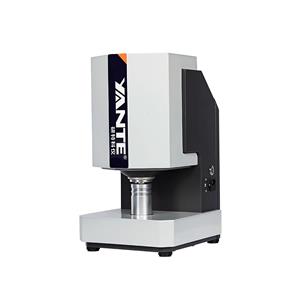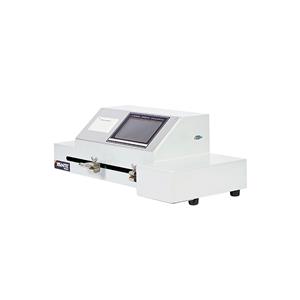Test method for tensile strength of Vertical Tensile Tester
The Vertical Tensile Tester adopts a unique vertical design, which has the characteristics of compact structure, complete functions, and convenient operation. The instrument adopts advanced components, supporting components, and single-chip microcontrollers from both domestic and foreign technologies for reasonable construction and multifunctional design. It has various parameter testing, conversion, adjustment, display, memory, and printing functions included in the standard, data processing functions, and can directly obtain statistical results of various data. It also has functions such as sensor over range protection, motor overload protection, and fault self diagnosis.
Vertical Tensile Tester can be used to measure the tensile strength, elongation, fracture length, tensile energy absorption, tensile index, tensile energy absorption index, tensile energy absorption value, tensile time at fracture, and elastic modulus of paper, toilet paper, aluminum foil, aluminum-plastic tape, etc. It can also be used in conjunction with different fixtures for testing peeling, box opening force, etc.
Force calibration:
1. Select "64" as the magnification factor, adjust the corresponding range, load the clamp without load, and press the O key to zero.
2. Hang weights with a range of about 2/3 and enter the corresponding force value of the weight in the [Standard Force Value] text box. Calibration is completed according to the saved force value.
Clamp distance calibration:
1. Use a measuring tool (ruler) to measure the distance between the upper and lower jaws (if there is a protrusion in the middle of the jaws, the distance between the two jaws).
2. Click on the text box after clamping distance calibration to input the distance of the quantity. Clamp distance calibration completed.
Tensile strength test
Test preparation
1. When the upper chuck is suspended, the zero point force value should be displayed as ± 0.05% of the measured maximum force value. If it exceeds the limit, press the 【 Zero Adjustment 】 button to adjust it to zero.
Set the corresponding parameters.
2. Cut the sample with a standard paper cutter, with a standard width of 15mm ± 0.1mm and a length of approximately 250mm.
3. Fix the sample on the upper clamp (butterfly screw lightly for easy adjustment), then fix it on the lower clamp, adjust the sample to be parallel to the two clamp edges (without wrinkles), and then tighten the upper and lower clamps.
4. Click the start button to start testing:
Test completed, add new data to the standby interface list. Automatically calculate standard deviation and coefficient of variation when the data exceeds 3 times. Users can perform operations such as deletion and printing.



